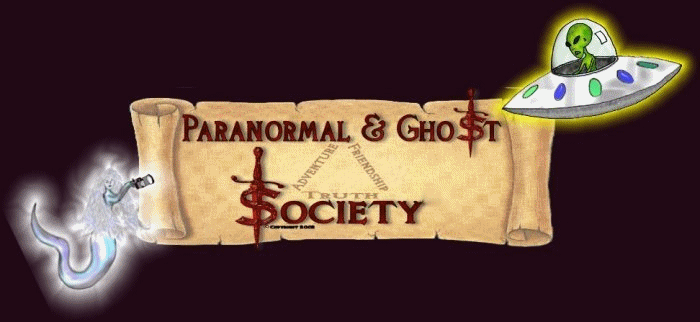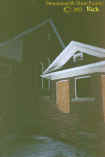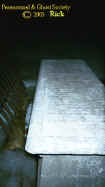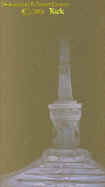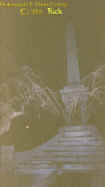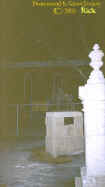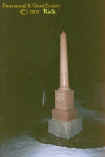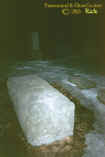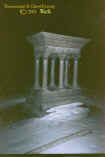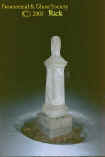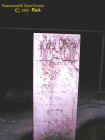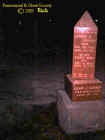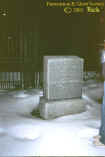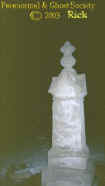|
|
||
|
Drummond Hill Cemetery is located just a few blocks away from Lundy's Lane Cemetery. One of the most fierce battles occurred here in the War of 1812. We are not the first paranormal organization to go here and investigate or take photos however this is the type of cemetery worth monitoring since there seems to be a lot of history to it. This cemetery in Canada is like the Gettysburg of PA. The hill is 700ft above sea level. The front of the cemetery has one of the most gorgeous monuments I have ever seen with cannon balls, cannons on both sides, stairs that you can walk up to it. The cemetery has these BIG rod iron gates and at the very top Drummond Hill is written on there. Many key generals are buried here including world famous stunt man that went over the falls in a barrel twice. There also seems to be a church on the property which is very old that I do not have much history on although further below on this page you can read about the battle that took place here and a little information about the church. There have been reports of 3 British soldiers seen at midnight walking up the hill and more then one person has seen these apparitions. Houses do surround the property and I am sure that some of these house are haunted since the whole area was a battle ground with many left dead or injured on the field. Many of the dead were eventually burned with ashes mixed together and bones. Later assuming that this is how the cemetery became. Battle of Lundy's Lane/Drummond Hill By: Niagara Falls Visitor & Convention Bureau Approximately 100 yards west of Portage Road on Lundy's Lane stood a Presbyterian Church built in 1775. It was a small red log building which stood on the highest ground on Lundy's Lane Hill (presently known as Drummond Hill). Along the south side of this church was a small enclosed grave yard. Lundys Lane Hill at 710 feet above sea level towered above the surrounding landscape. To the south side of Lundy's Lane Hill (present site of Barker Street) was a young orchard below the grave sites. Among the tender trees stood a small house and a farm yard. The closest house to the battlefield was James Forsyth's house ( present site of Ukrainian Catholic Church - Main Street). The next closest house was that of Haggai Skinner who lived north of the battlefield on present day Drummond Road. The only homes on Lundy's Lane were the homesteads of the Lundy's and the Green's quite a distance away. Surrounding Lundy's Lane Hill were meadows and cultivated fields with thick woods less than a mile away stretching in every direction. According to a letter written about the
Prospect Hotel by the son of the original builder, Robert Fairbank, there
is a tunnel that runs from Drummond Hill Cemetery to the Prospect Hotel.
Now boarded up, it was originally used as an escape route by defenders,
during the Revolutionary War and the War of 1812. On July 25th 1814, Major General Phineus Riall began marching his British army southward towards Chippawa from Queenston. They arrived at Lundy's Lane Hill at noon. Lundy's Lane Hill was located just west of Portage Road and was the highest point of land in the area. It provided an excellent vantage point in all directions over looking the lower surrounding area. Major General Jacob Brown thought the British would march eastward in an attempt to cut off the supply lines to Fort Schlosser. Because of this, Brown ignored a sighting of British troops along the Portage Road near the Falls. At 5 p.m. on July 25th 1814, Major General Brown was convinced that the British were invading Lewiston by crossing the Niagara River at Queenston. Brown ordered General Winfield Scott to march towards Queenston with a brigade of soldiers in an attempt to force the British to withdraw. The movement of Scottís brigade was spotted by a British sentry, William Hamilton Merritt. The Americans had fired in Merritt's direction, but Merritt made his escape. Merritt rode to Drummond Hill on Lundy's Lane to notify the main British force. The Americans stopped at Wilsonís Tavern located along the Portage Road above the Horseshoe Falls. General Scott questioned Mrs. Wilson about the British. In order to save her tavern, Mrs. Wilson told Scott that the British had 800 regular soldiers along with 300 militia and Indian allies. She told Scott that the British were being led by Major General Rail and that they were encamped at Portage Road at Lundys Lane. Without waiting for reinforcements, Scott and his brigade pushed ahead. Mrs. Wilson in providing information to Brown unwittingly over stated the strength of the British forces. As General Scott and his American infantry moved forward they did so very carefully and slowly. As the Americans approached Lundys Lane, British Major General Riall ordered his men to retreat from Lundys Lane Hill back to Queenston. As Riall and his soldiers were retreating, they met British Major General Gordon Drummond along with reinforcement troops on the Portage Road approximately one mile north of Lundys Lane. Major General Drummond countermanded General Riallís orders and ordered all the British troops back to Lundy's Lane Hill. In the meantime, Scott was still of the belief that half of the British army were by now on American soil so he ordered his brigade to move slowly forward. Because of the errant information, Mrs. Wilson had given to Scott, the British troops had just enough time to return to Lundys Lane Hill. Scott and his infantry brigade advanced, the British opened fire. Scott quickly realized that he was facing the bulk of the British forces, however the American out numbered the British. The battle of Lundy's Lane continued into the night. The Americans forced the British to abandon Lundys Lane Hill and retreat a short distance to the north. Several counter attacks including an attack from the rear by the British were unsuccessful. This bloody battle had left many dead and wounded. At approximately midnight, the British were on the verge of a certain defeat, when the Americans were ordered by Scott to withdraw back to Chippawa. Scott needed water for his troops and was unaware that a water supply closer to Chippawa was available. Once the Americans had abandoned Lundy's Lane Hill, it was quickly retaken by the British. The Americans had tried to retake Lundys Lane Hill from the British on the morning of July 26th 1814, however found that the British had reinforced and entrenched themselves. Before the battle had ended, 5,000 American soldiers had faced 2,200 British soldiers, militia and Indians in the largest and bloodiest battle of the war. The Americans withdrew to Fort Erie. As they retreated, they burned Bridgewater Mills to the ground. Casualties during this battle were heavy. The Americans had sustained 173 soldiers killed, 624 wounded and 117 taken prisoner. The British had sustained 94 soldiers killed, 559 wounded and 221 taken prisoner. British General Riall had been taken prisoner by the Americans. Americans, Major General Brown and General Scott were seriously wounded during the battle. On August 2nd 1814, Major General Gordon Drummond and his British forces attacked the supply lines to the Americans at Fort Erie. The Americans forced the British to retreat to Chippawa. Most of the dead soldiers were burned on the battlefield in a gigantic funeral pyre. The location of this pyre is present site of the old manse for Drummond Hill Presbyterian Church. The log meeting house was destroyed.
|
||
|
|
|
